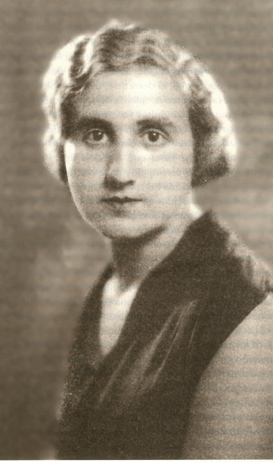Ana María Martínez Sagi facts for kids
Anna Maria Martínez Sagi (born February 16, 1907 – died January 2, 2000) was an amazing Spanish woman. She was a talented poet, a strong supporter of workers' rights (a trade unionist), a journalist, and a feminist. This means she believed in equal rights for women. She was also a great athlete, becoming a national champion in javelin throwing.
Anna Maria made history as the first woman to be a director of a Spanish football club. During the Spanish Civil War, she worked as a journalist, reporting from the front lines. Later, she had to leave Spain and live in France. During World War II, she bravely joined the French Resistance, a group fighting against the German occupation. She even managed to escape capture by the Gestapo, a secret police force.
After the wars, she worked for the Aga Khan's family. Then, she moved to the United States and taught at the University of Illinois. When Francisco Franco died, she returned to Catalonia, Spain. She lived a quiet life near Barcelona, and many people around her didn't know about her incredible past.
Contents
Early Life in Barcelona
Anna Maria Martínez Sagi was born in Barcelona, Catalonia, in 1907. Her family was well-off and respected. Her father worked in the textile industry. Her mother wanted her children to speak Spanish and English. However, Anna Maria learned Catalan, the language she later wrote in, from her nanny.
A Life of Many Talents
Anna Maria loved sports. She was a national champion in javelin throwing. Her brother, Armand Martínez Sagi, and her cousin, Emilio Sagi Liñán, both played for FC Barcelona. In 1934, Anna Maria became a director for FC Barcelona. This made her the first woman ever to hold such a position in Spanish football history!
Journalism and Women's Rights
Martínez Sagi became a very important journalist in Spain during the time of the Republic. Her articles often focused on women's suffrage, which was the right for women to vote. This was a very important and debated topic back then.
During the Spanish Civil War, she joined the Durruti Column as a journalist. This was a group fighting in the war. She decided to join after hearing the anarchist leader Buenaventura Durruti speak.
Besides her journalism, Anna Maria also published several books of poetry. Her poems often showed deep feelings. After her first poetry book, Caminos, came out in 1930, people compared her to famous poets like Rosalía de Castro.
Supporting Women Workers
As a feminist, Anna Maria had ideas that came from France. She started the first club for women workers in Barcelona. This club helped women learn to read and write, improving their lives.
Life in Exile
After the Spanish Civil War ended, Anna Maria Martínez Sagi had to leave Spain. She lived in Paris and then Chartres, France. When World War II began, she joined the French Resistance. This was a secret group that fought against the German forces occupying France. In 1942, she narrowly escaped capture by the Gestapo. They raided her apartment, but she managed to get away through a window.
Later, while selling handkerchiefs in Cannes, she met the wife of the Aga Khan. She worked for her as an interior designer before moving to Provence. In 1950, Anna Maria moved to the United States. She had a degree in French Language and Literature, which allowed her to teach at the University of Illinois.
Return to Catalonia
In 1975, after the death of Francisco Franco, Anna Maria returned to Catalonia. She moved to Moià, a town near Barcelona. She lived a very private life there. Her neighbors didn't know about her amazing past and thought of her as a strict old lady.
Years later, a novelist named Juan Manuel de Prada found her and interviewed her. Her writings were published after her death in a book called La voz sola (2019). Anna Maria Martínez Sagi passed away in 2000.
Selected works
- Caminos
- Laberinto de presencias: antología poética
- Inquietud
- La voz sola
See also
 In Spanish: Ana María Martínez Sagi para niños
In Spanish: Ana María Martínez Sagi para niños


